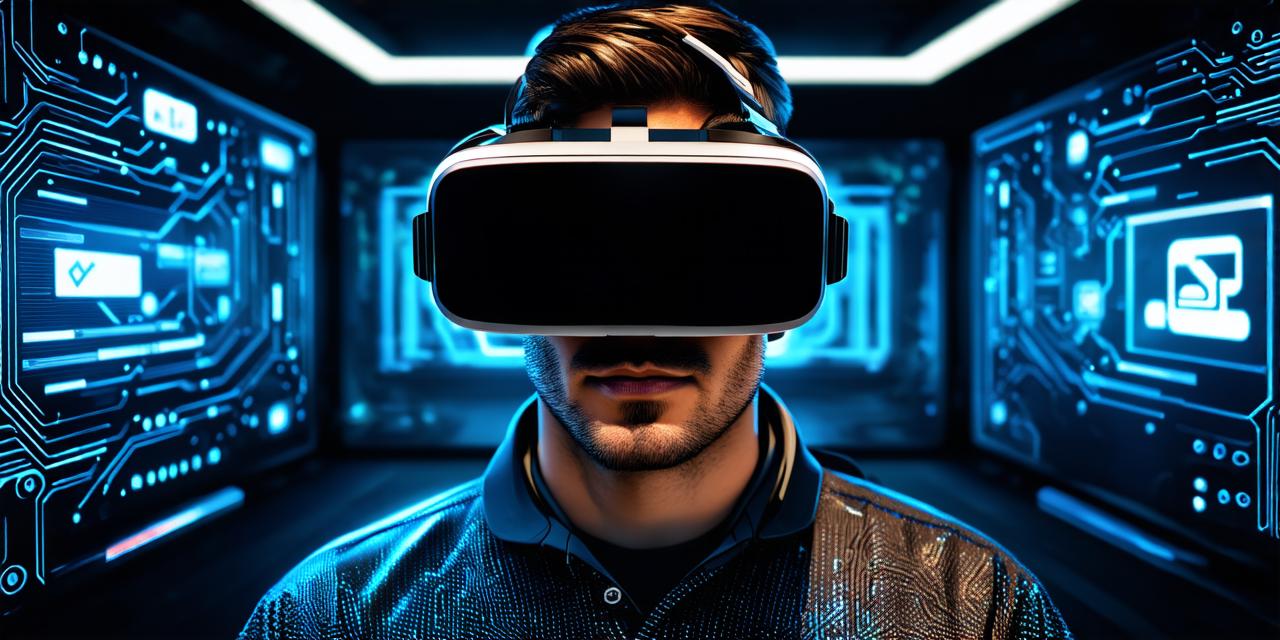How does virtual reality increase collaboration?
VR provides a unique opportunity for teams to collaborate more effectively during the development process. By allowing team members to work together in a virtual environment, they can share ideas and feedback in real-time, which can lead to faster and more efficient development cycles.
How does virtual reality reduce costs?
Using VR in software development can also help reduce costs. By creating a virtual prototype of an application, developers can test it out and make changes quickly, without having to wait for lengthy testing periods or pay for physical prototypes. Additionally, by creating a more immersive and interactive user experience, companies can reduce the number of customer complaints and returns, which can help offset development costs.
Optimizing Software Development with Virtual Reality: A Comprehensive Guide for VR Developers
Virtual Reality (VR) is becoming an increasingly popular technology for software development. With its ability to create immersive and interactive experiences, VR has the potential to revolutionize the way we develop and test software applications. In this article, we will explore some of the ways in which VR can be used to optimize software development, and provide real-life examples of companies that have successfully implemented VR in their development processes.
The Benefits of Using Virtual Reality in Software Development
Improved User Experience
One of the main benefits of using VR in software development is the ability to create a more immersive and interactive user experience. By allowing users to interact with an application in a virtual environment, developers can get a better understanding of how users will interact with their product and make necessary changes to improve the overall experience.
For example,
IKEA
uses VR to allow customers to virtually test out furniture in their homes before making a purchase. This not only provides a better user experience for customers, but also helps reduce the number of returns and complaints, which can help offset development costs.

Faster Development Cycles
VR allows developers to test and iterate on their applications in real-time, which can significantly speed up development cycles. By creating a virtual prototype of an application, developers can test it out and make changes quickly, without having to wait for lengthy testing periods.
For example,
Ford Motor Company
has been using VR in their software development process for over a decade. They use VR to simulate complex manufacturing processes, allowing them to identify and fix issues before they occur on the production line. This not only helps improve efficiency and reduce costs, but also allows Ford to create safer and more reliable vehicles for their customers.
Increased Collaboration
VR provides a unique opportunity for teams to collaborate more effectively during the development process. By allowing team members to work together in a virtual environment, they can share ideas and feedback in real-time, which can lead to faster and more efficient development cycles.
For example,
Unity Technologies
uses their own proprietary engine to create immersive and interactive experiences for a wide range of applications, from gaming to education to enterprise. By using VR in their development process,
Unity Technologies
has been able to create more efficient and cost-effective development cycles, while also providing better user experiences for their customers.
Reduced Costs
Using VR in software development can also help reduce costs. By creating a virtual prototype of an application, developers can test it out and make changes quickly, without having to wait for lengthy testing periods or pay for physical prototypes. Additionally, by creating a more immersive and interactive user experience, companies can reduce the number of customer complaints and returns, which can help offset development costs.
For example,
IKEA
uses VR to allow customers to virtually test out furniture in their homes before making a purchase. This not only provides a better user experience for customers, but also helps reduce the number of returns and complaints, which can help offset development costs.
Real-Life Examples of Companies Using VR in Software Development
Unity Technologies
Unity Technologies is one of the largest developers of virtual reality software. They use their own proprietary engine to create immersive and interactive experiences for a wide range of applications, from gaming to education to enterprise. By using VR in their development process,
Unity Technologies
has been able to create more efficient and cost-effective development cycles, while also providing better user experiences for their customers.
IKEA
IKEA is another company that has successfully implemented VR in their software development process. They use VR to allow customers to virtually test out furniture in their homes before making a purchase. This not only provides a better user experience for customers, but also helps reduce the number of returns and complaints, which can help offset development costs.
Ford Motor Company
Ford Motor Company has been using VR in their software development process for over a decade. They use VR to simulate complex manufacturing processes, allowing them to identify and fix issues before they occur on the production line. This not only helps improve efficiency and reduce costs, but also allows Ford to create safer and more reliable vehicles for their customers.
Other Companies
Other companies that have successfully implemented VR in their software development process include:
- Architectural firms, such as SketchUp and Autodesk, which use VR to allow clients to visualize and interact with architectural designs in a virtual environment.
- Training and education providers, such as Coursera and Udacity, which use VR to create immersive learning experiences for students.
- Healthcare providers, such as Mayo Clinic and Cleveland Clinic, which use VR to simulate medical procedures and train doctors and nurses in a virtual environment.
Conclusion
Virtual Reality is becoming an increasingly popular technology for software development. With its ability to create immersive and interactive experiences
